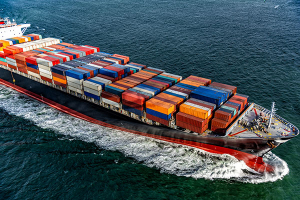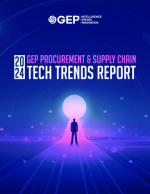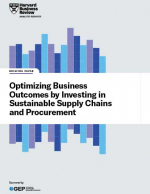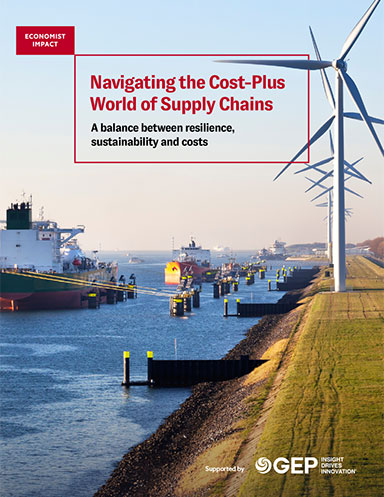Navigating the Cost-Plus World of Supply Chains
This white paper aims to delve into the strategies that enterprises are currently employing, as well as explore untapped possibilities for balancing these three critical priorities - costs, resilience and sustainability.
A Balance Between Resilience, Sustainability and Costs
Global supply chains have been fundamental to economic globalisation. Enabled by a period of relative geopolitical stability, they were underpinned largely by the pursuit of costminimisation and efficiency.
More recently, different forces have come to strain global trade networks. We have entered a Cost-Plus World of Supply Chains in which supply chain managers seek to harmonise their traditional pursuit of shortterm cost minimisation with the increasingly more important long-term goals of resilience and sustainability in manufacturing and distribution operations.
The shift towards a cost-plus world of supply chain management occurs against a confluence of risk factors, including geopolitical tensions, macroeconomic tightening, environmental concerns and various input shortages. Some of the initial impetus came from the imposition of tariffs on Chinese exports by the US. The shift was accelerated by the Covid-19 pandemic that disrupted worldwide production and transportation beyond distorting the supply/demand equilibrium for critical goods.
The ensuing demand for more environmentally sustainable business practices has placed additional pressure on supply chains, while shortages of key inputs, such as semiconductors, further strained the global network. Climate-related events have also emerged as critical disruptors, exacerbating shipping and logistics uncertainties, while the higher cost of inputs, including raw materials, has added another layer of complexity. In turn, labour shortages have limited workforce availability and hindered production capacity. Infrastructure constraints, such as warehouse shortages, have further compounded supply chain challenges.
Against this backdrop, Russia’s invasion of Ukraine has highlighted the inextricable link between geopolitics and global supply chains. The conflict has closed off markets and sent shockwaves through commodity exchanges underlining the interconnected nature of global trade and the many risks businesses now need to navigate in the Cost-Plus World of Supply Chains.
Read the report to see the strategies available to businesses in their effort to strike the right balance between cost-efficiency and resilience, between fostering sustainable growth and maintaining competitiveness. By exploring diverse approaches to supply chain management, we seek to equip supply chain managers and procurement leaders with the knowledge and tools necessary to make better informed decisions.
What’s Related




Favorites





